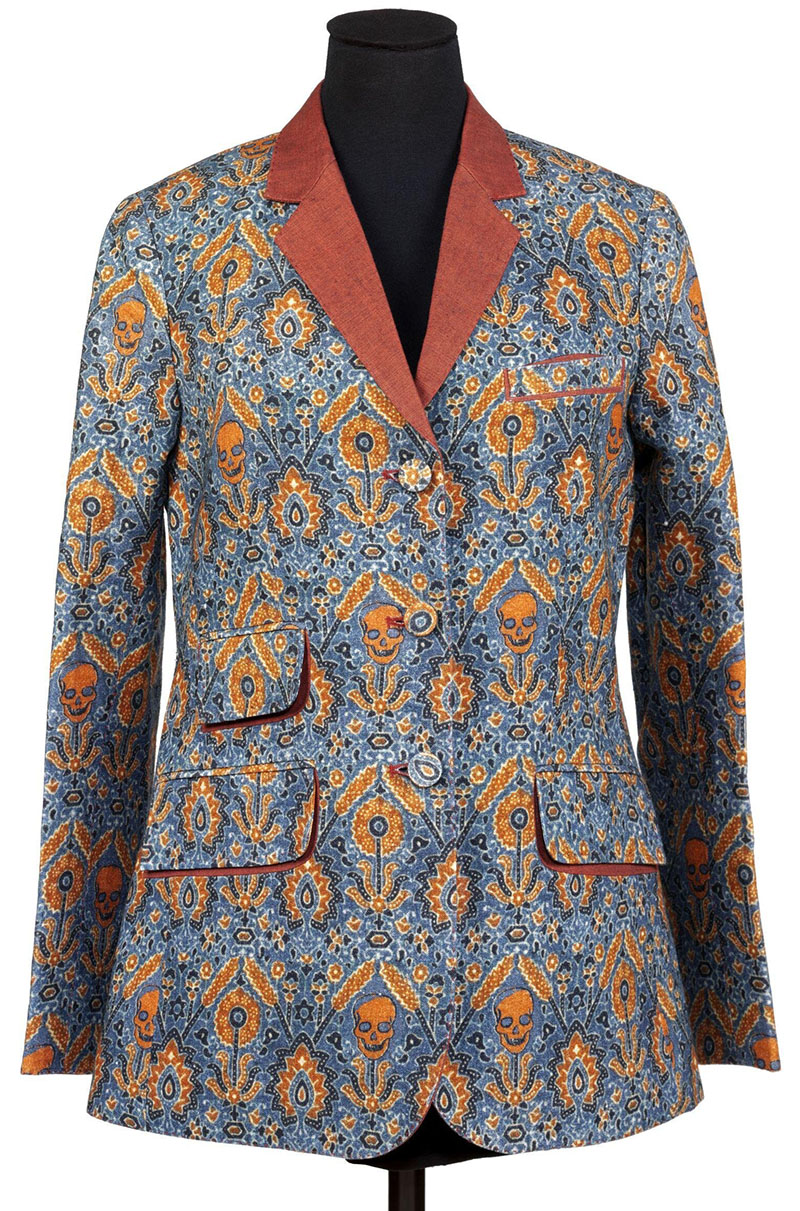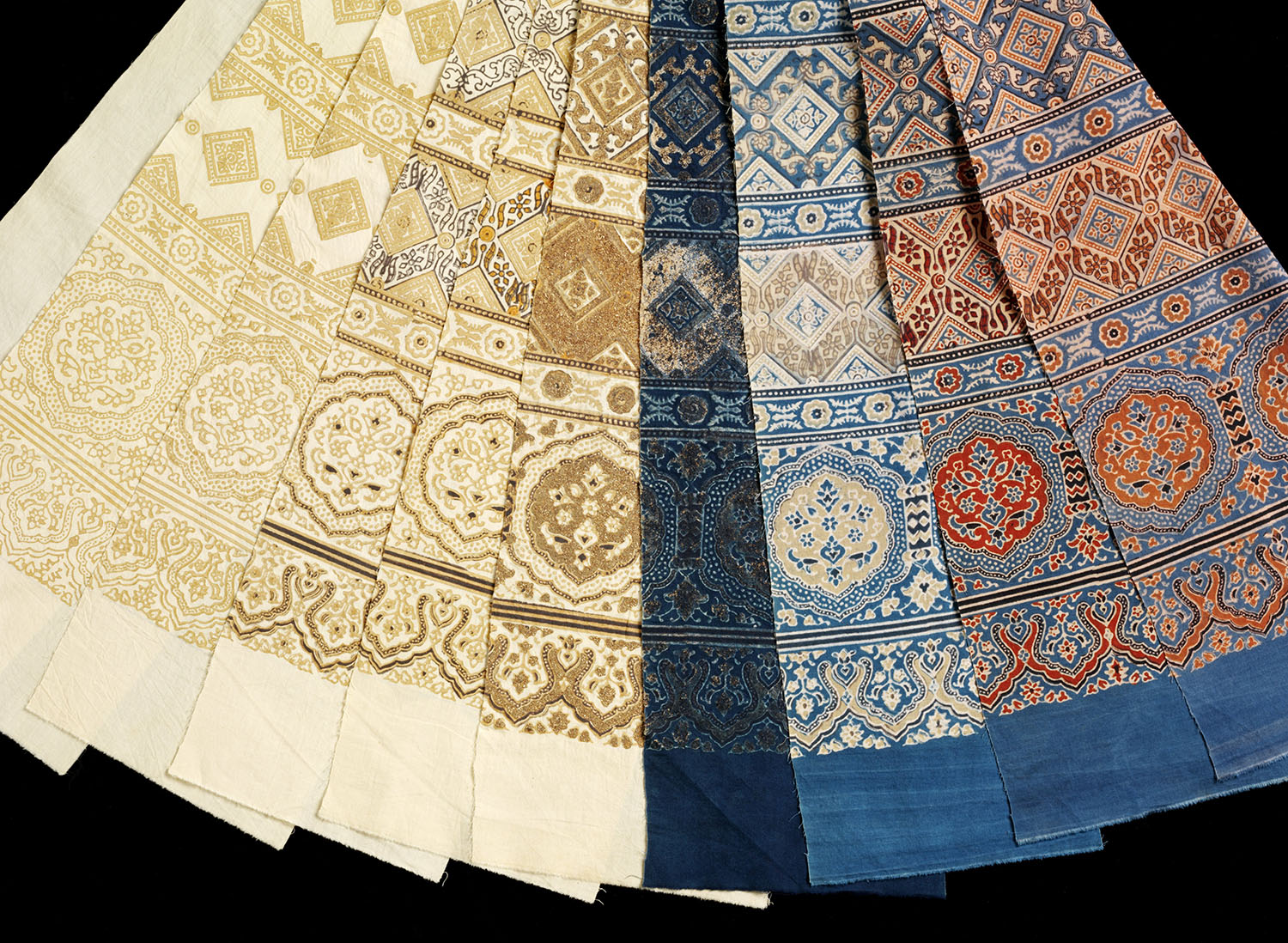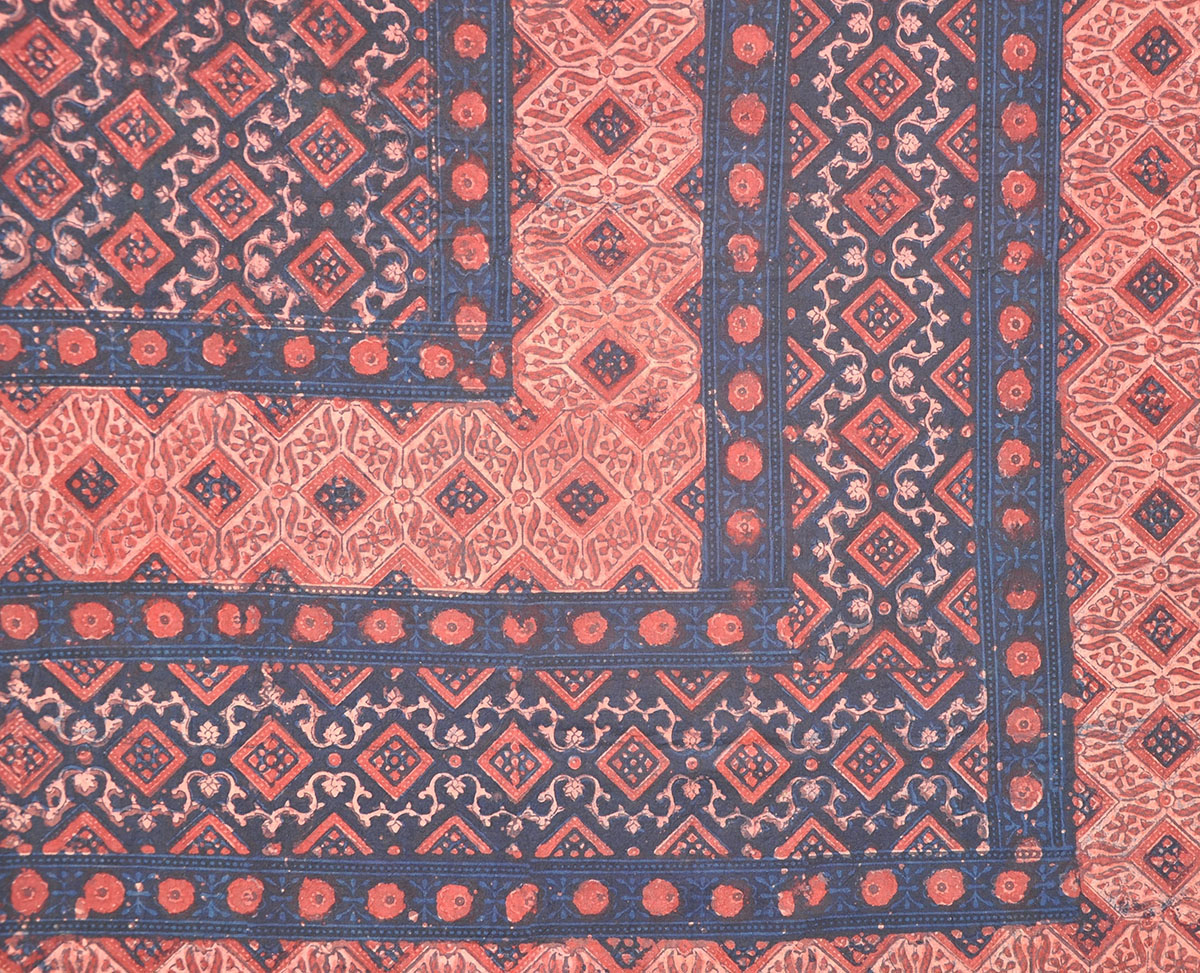ARTICLE
Ajrakh
In the next step, kut, a dye made of iron, jaggery, assorted millets and tamarind, is used to print another set of lines within and over the initial rekh. These lines oxidise when exposed to air and the harda and develop a black colour. Next, a dye that uses alum as a mordant is used to fill in the red details. A paste called pa, made using clay, millet flour and dhawda gum, is applied over these filled-in details to make them resistant to indigo dyeing. Dry cow dung powder is then sprinkled over the wet pa to prevent the resist from spreading.
Once the printed lines have dried, the cloth is ready for dyeing. It is dipped in large vats containing a mixture of indigo, lime, jaggery and mustard seeds. The dyed cloth emerges a bright green that slowly turns blue once the dye oxidises. Various natural dyes may be added to the fabric before this stage. The cloth is then repeatedly washed and dried. Following this, the fabric is dyed red by soaking it in a solution of alizarin, natural gum, dhawda flowers and madder, and stirred continuously. It is then dried and washed, and the resultant cloth is considered a simple ajrakh. It is possible to carry out multiple rounds of resist printing and indigo dyeing to give the fabric added detail and dimension. This more intricate form of ajrakh is known as minakari, named after the detailed enamel jewellery tradition.
The blocks used in ajrakh are often carved out of sheesham, rohida or sagwan wood, with cosmic and naturalistic motifs. Some blocks are carved in pairs, allowing traditional master karigars (meaning “artisans” in Hindi) to print fabrics identically on both sides with extreme precision. Traditionally, the Khatris have carved the blocks themselves, although this is now in decline, with blocks being carved in Ahmedabad or Farrukhabad in Gujarat.
Ajrakh fabrics were primarily worn only by pastoralist men of Gujarat, Rajasthan and the Sindh regions, typically as a lungi, fainta or gamcha. However, its use is not restricted to special occasions, but functions as a versatile fabric for everyday needs: it is often wrapped as a turban or shawl, and is used to create women’s garments including odhnis and skirts or used as a bedsheet or tablecloth. After extensive use, the fabric softens and can be used to swathe babies, make hammocks and used as patchwork to create quilts called rillis.
Today, commercially produced, cheaper versions of ajrakh are screen-printed in parts of Rajasthan. One of the current most prominent master karigars of the technique is Dr. Ismail Mohammad Khatri, who — along with his sons, grandsons and the larger Khatri community — continues to print the fabric in the traditional manner, using only natural dyes.
Bibliography
Our website is currently undergoing maintenance and re-design, due to which we have had to take down some of our bibliographies. While these will be re-published shortly, you can request references for specific articles by writing to hellomapacademy@map-india.org.









